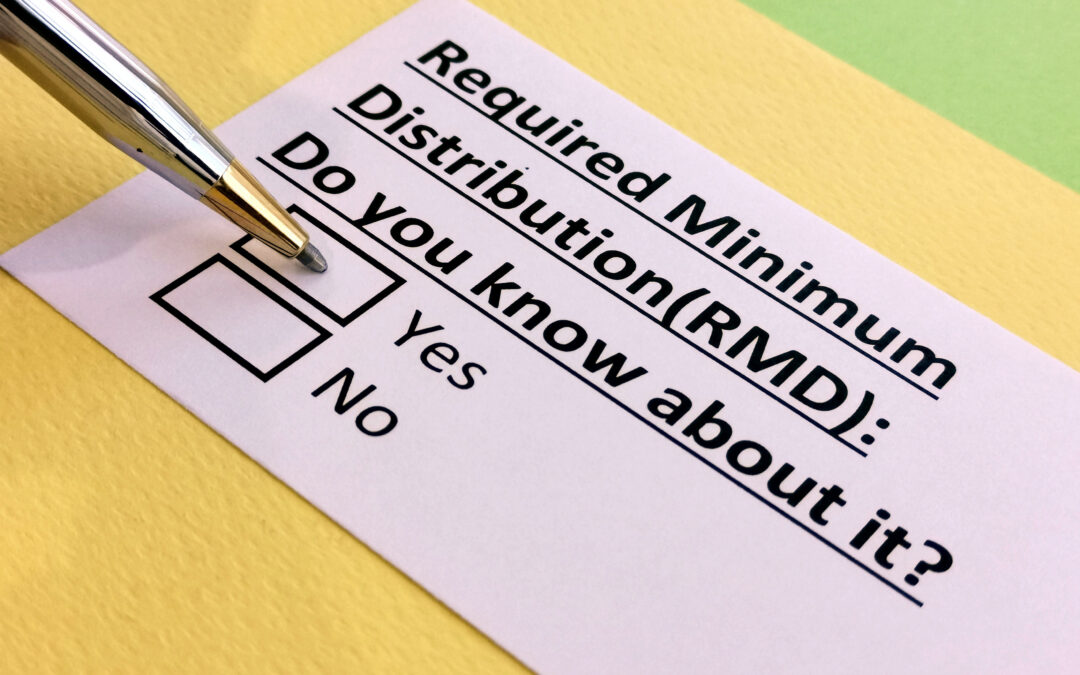Background
In December 2022, Congress passed legislation that enhanced the 2019 SECURE Act. The enhancement – referred to by many as SECURE 2.0 Act – was signed by President Biden and enacted immediately.
The law includes a number of significant provisions that will affect how Americans plan and save for retirement.
We’ve focused here on those aspects that affect Required Minimum Distributions (or “RMDs”) from retirement accounts.
What Are RMDs?
So what is an RMD? First, remember that all the money you contributed to your traditional 401(k) plan at work, or to your 403(b), SEP IRA or regular IRA, was done with pre-tax dollars – that is, income that you put into the account before you paid any tax on it to the IRS.
The investment earnings on those salary deferrals or IRA contributions – interest, dividends, and capital gains – were also never taxed – they just continued to accumulate in your account over the years.
But… the 401(k), 403(b), SEP IRA and IRA are not tax-free retirement accounts, they are tax-deferred accounts.
So, after letting those contributions – and the income they earned – grow without tax – often for 40 years or more, the IRS wants to start collecting the taxes that it deferred. But they’ve graciously allowed you to wait until you reach a certain age before doing so.
An RMD is the minimum amount that the IRS requires you to withdraw from your retirement account each year after a certain age, so that they can tax it.
And this is where the SECURE 2.0 Act comes into play – it changed the age at which you need to begin taking your RMDs.
You can read about exactly how your RMDs are calculated here.
When Do My RMDs Begin?
Until the end of 2022, you were required to take your first RMD when you reached age 72. But beginning in 2023, that has been extended to age 73.
Note that if you turned 72 in 2022 or earlier, you’ll still need to continue taking your RMDs as originally scheduled. The age change doesn’t affect you.
And if you’re turning 72 this year – 2023 – and you’ve already scheduled your RMD withdrawal, you may want to consider revisiting that plan and pushing the start date out to line up with the new rules.
Finally, the Act further extends the age at which RMDs must begin to 75, beginning in 2033.
Can You Delay Taking Your RMDs?
We’re frequently asked if there is a way to delay taking an RMD beyond the required beginning date. This makes sense, because in many cases the account owner doesn’t need the RMD income, and delaying the distribution leaves the money in the account to continue to grow tax-deferred.
The short answer to this question, though, is that you may be able to delay taking your RMDs from an employer-sponsored plan like a 401(k) or 403(b), if:
– you have a retirement account with the company’s plan, and
– you’re still working for the company that sponsors the plan, and
– you DON’T own more than 5% of the company that sponsors the plan
If you meet all of these criteria, you may be able to delay taking your RMDs from the plan until the year you retire.
Note that if you’re still working past age 72, but the RMD is for an IRA, then you cannot delay your start date for taking your RMDs.
Importantly, if you don’t take your RMD on time, there can be significant penalties. These can be as much as 25% of the amount that should have been distributed but wasn’t.
Still Confused?
If all of the above still has you a bit confused, then we’ve got a solution for you – a simple, easy-to-understand guide that will walk you step-by-step through the information that determines whether you can delay taking your RMDs.
Get Your Free Guide to Delaying Your Required Minimum Distributions
PLEASE SEE important disclosure information at www.springwaterwealth.com/blog-disclosure/.
